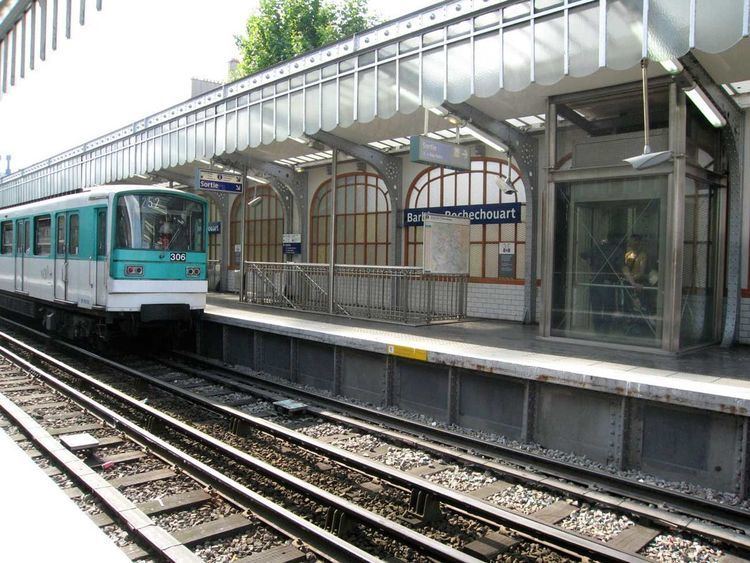Owned by RATP Fare zone 1 Opened 31 January 1903 | Operated by RATP Address 75018 Paris, France Owner RATP Group | |
 | ||
Location Boul. de la Chapelle × boul. Magenta
Boul. de la Chapelle × boul. Barbès
1, boul. Rochechouart
2, boul. Rochechouart
45, boul. de la Chapelle
9th arrondissement of Paris
Île-de-France
France Similar Strasbourg – Saint‑Denis, Anvers, Château Rouge, Étienne Marcel, town hall of Paris 18th arrondissement | ||
Barbès – Rochechouart is a station on Paris Métro Line 2 and Line 4 at the point where the 9th, 10th, and 18th arrondissements all share a single point. The station is at the junction of Boulevard Barbes, named for the revolutionary, Armand Barbès, Boulevard de Rochechouart, named for the abbess, Marguerite de Rochechouart, Boulevard de la Chapelle and Boulevard de Magenta.
The station is the former location of the Barrière Poissonnière, a gate in the Wall of the Farmers-General built for the collection of excise taxes (the octroi). The gate was built between 1784 and 1788, and it was demolished in the nineteenth century.
History
The elevated line-2 station was opened on 31 January 1903 as the Boulevard Barbès station, as part of the extension of line 2 from Anvers to Bagnolet (now called Alexandre Dumas). It was renamed to its current name eight days later. Line 2 descends into a tunnel to the west of the station. The underground line-4 station was opened on 21 April 1908 as part of the first section of the line from Châtelet to Porte de Clignancourt.
The disastrous fire of 10 August 1903 that resulted in eighty deaths at Couronnes station began here.
During World War II (1939–45), on 21 August 1941 Pierre Georges and three companions of the French Resistance shot and killed a German soldier named Alfons Moser when he was boarding a train at the Barbès station at eight in the morning. The killing was in revenge for the execution of Samuel Tyszelman for taking part in an anti-German demonstration. This was the start of a series of assassinations and reprisals that resulted in five hundred French hostages being executed in the next few months.
